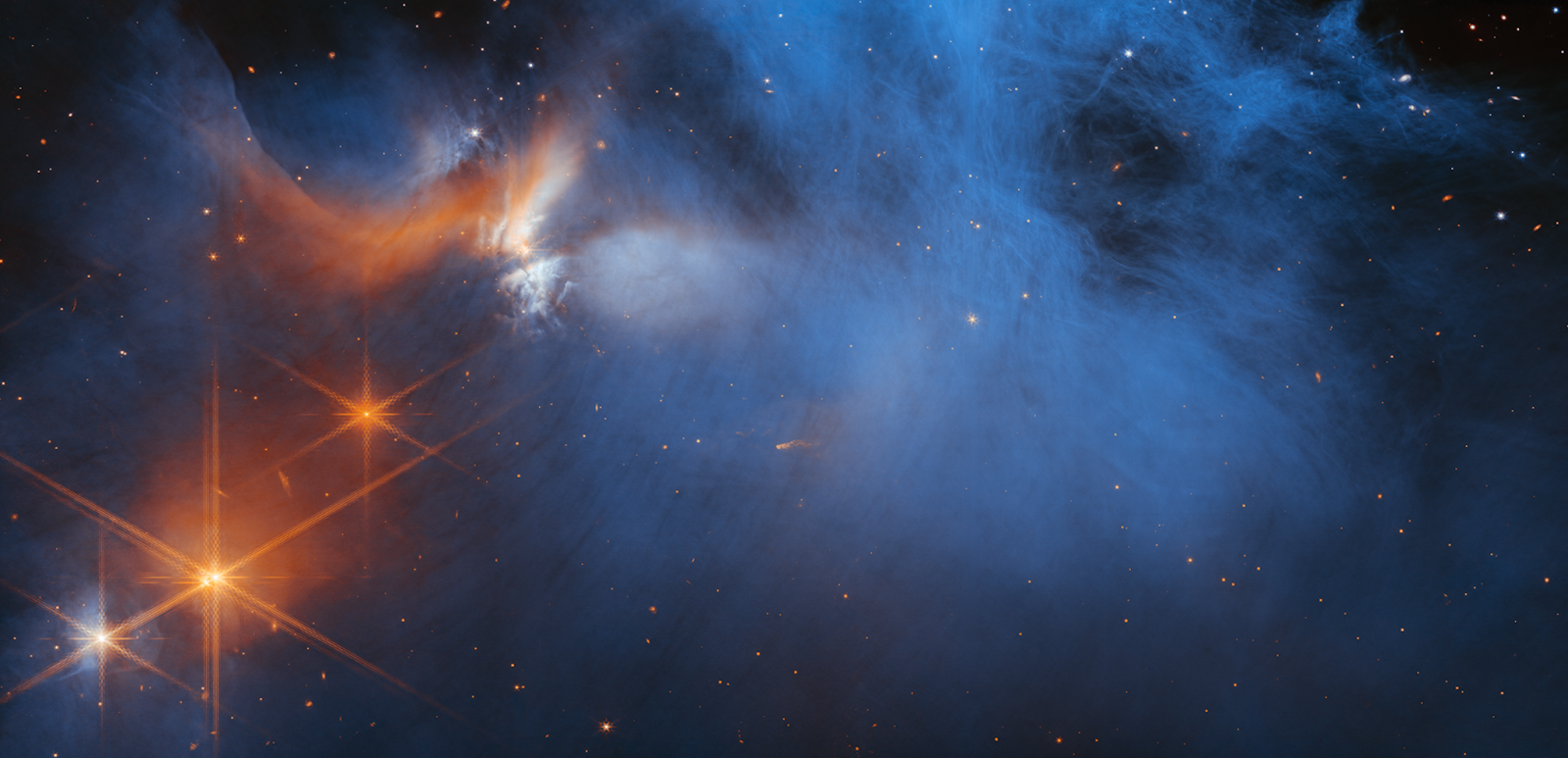James Webb Space Telescope breaks new ground by sneaking a glance into the freezing inventory of the Universe. The latest released images by the Webb showcase a section of the Chameleon I molecular cloud located around 630 light years away from Earth. At -260°C, this cloud is housing ice grains which were never previously seen but are now being observed by the Webb.
Why is the James Webb Space Telescope so special?
James Webb Space Telescope is famously named after James E. Webb, the second administrator of NASA. This telescope is a joint work of the American, European and Canadian space agencies. As the world’s largest optical space telescope, it is capable of viewing objects that are too old, too far or too faint for the Hubble Space Telescope.
The optical element of the telescope is composed of a primary mirror which consists of eighteen beryllium-made hexagonal segments plated with gold to capture faint infrared light. It also consists of a secondary mirror that reflects the captured light from the primary mirror onto science instruments.
The Integrated Science Instrument Module (ISIM) contains Webb’s cameras and stores all the scientific data. Earth pointing antenna then sends this data back to Earth and receives command signals from NASA’s Deep Space Network.
Image credits: Wikimedia commons
Other parts of the telescope are responsible for stabilizing, protecting and driving the satellite. The spacecraft bus contains all the control machinery responsible for steering the satellite. A multilayered sun-shield protects the observatory from heat and light coming from Sun and Earth. A solar power array is also present in the telescope which always faces the sun and relies on solar energy to generate electricity that powers the observatory.
Using this telescope, it is possible to conduct research in a wide range of astronomical and cosmological domains, including the observation of the first stars, the birth of the earliest galaxies, and the detailed study of the atmosphere of exoplanets that may one day be habitable.
Discovering Icy chemical origins of Life
While probing into the darkest and coldest regions of the Universe in search of clues for the chemistry involved in planet-making, Webb looks at the stars beyond the blue-wispy Chameleon I. As the light emitted by the stars beyond gets absorbed by the ices in the cloud, it appears like a shadow puppet.
As Dr Melissa McClure from Leiden University explained, the ices absorb light at specific wavelengths, and you can determine what chemical species you have by adding together all of those wavelengths into a spectrum. Webb’s near-infrared and mid-infrared spectrometers (NIRSpec and MIRI) do this work.
Apart from the simple ices like water, methane, carbon monoxide, ammonia and carbon dioxide, it also observes other complex compounds like carbonyl sulphide and methanol in ice form. It can also detect hints of multiple carbon-containing species such as acetone, ethanol, and acetaldehyde. Usually, these substances are seen as gases in space but Webb is reaching a new milestone by seeing them in the solid state as ices.
Image Credits: Unsplash
The amount of “light elements” (carbon, hydrogen, oxygen, nitrogen, and sulphur) present in the ice, although higher than previously recorded, is still lower than expected.
What is exciting about this discovery?
This discovery will help scientists understand the origin of the chemistry of life and how it evolved into the sophistication it now displays on our planet. The Panspermia theory which says that life began in space and was later transported through comets and meteorites to the planets can be tested with the data being collected by the Webb Space Telescope
The clouds that we are seeing in Chameleon I will eventually collapse to form stars and planets around them by following the chemistry spied by Webb. The frozen dust particles in Chameleon I would mostly evaporate, but further out, they might survive and gather together to form comets. These comets would then have a large chemical inventory in them and they would likely bombard planets, providing the organic soup from which life might evolve.
This is exciting for astronomers as this discovery means that there is something about interstellar chemistry and the origin of life that is still not fully understood. This motivates them to not just keep observing, but also to experiment in the laboratory. More such discoveries could provide us with more supporting clues for the said theory and we just might inch a step closer to knowing about our origins.
If you enjoyed reading our articles, please consider supporting us by buying our geeky merchandise on Instagram.
Alternatively, you could Buy us a coffee or follow us on Facebook, Twitter, Pinterest or Medium!






